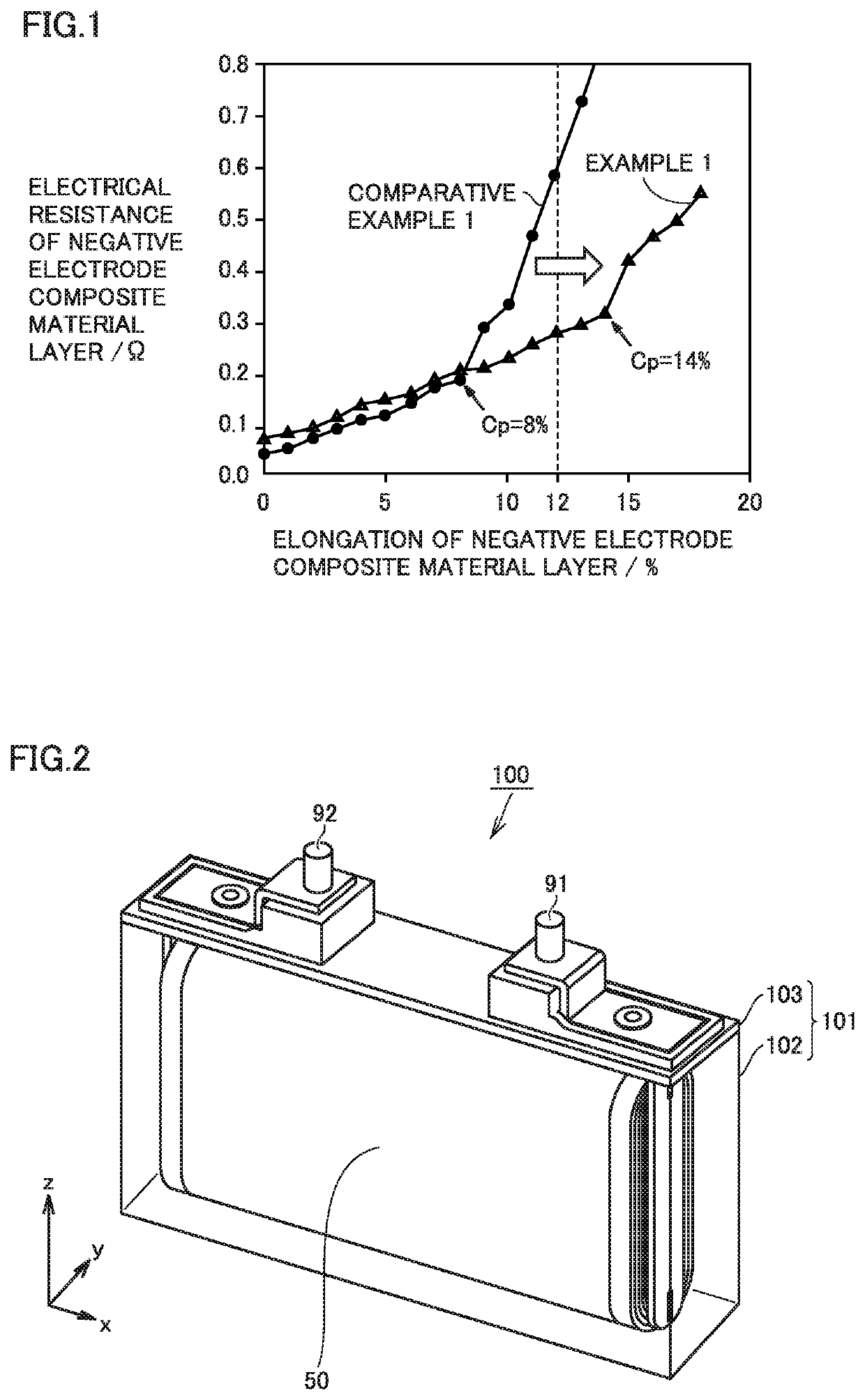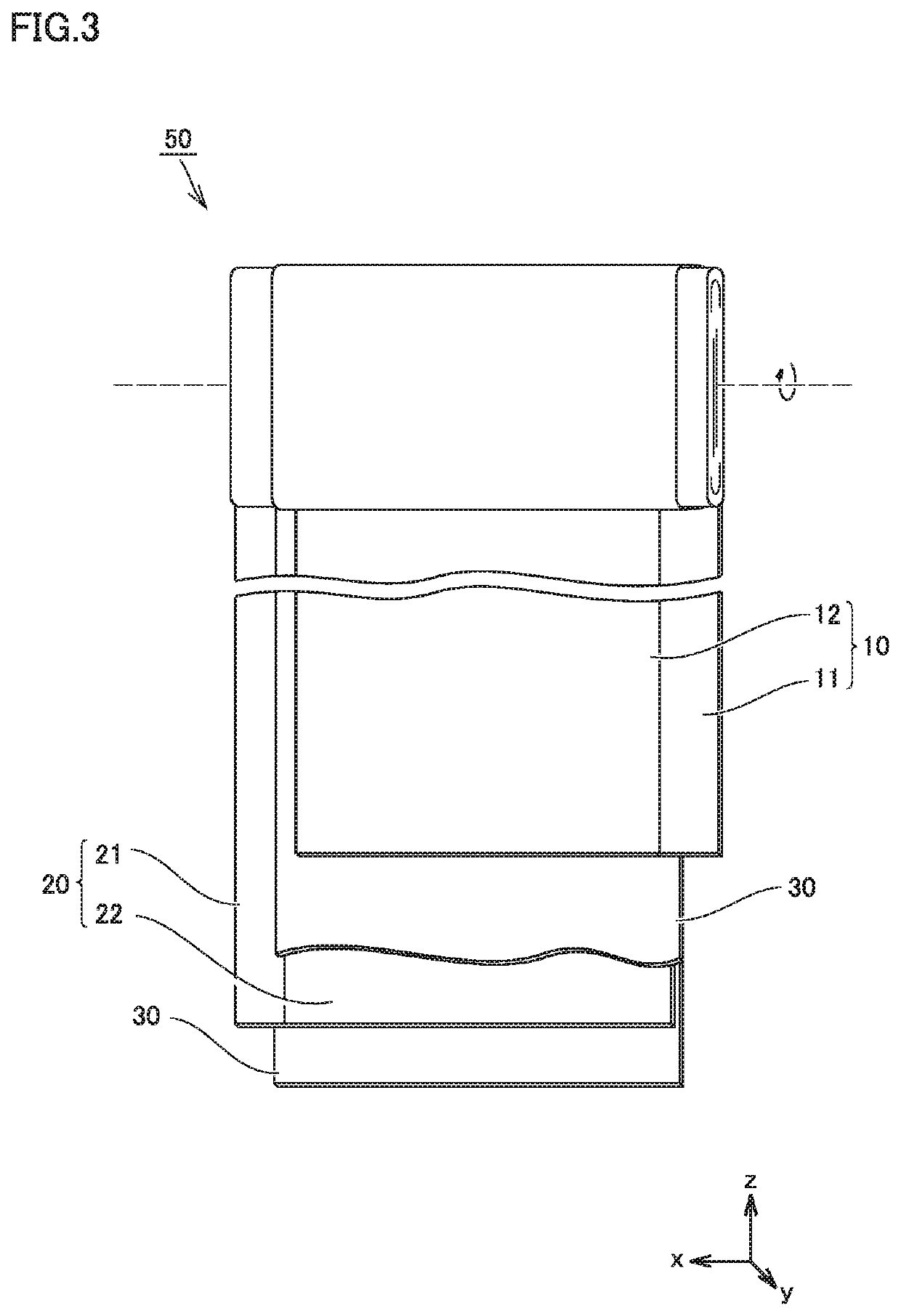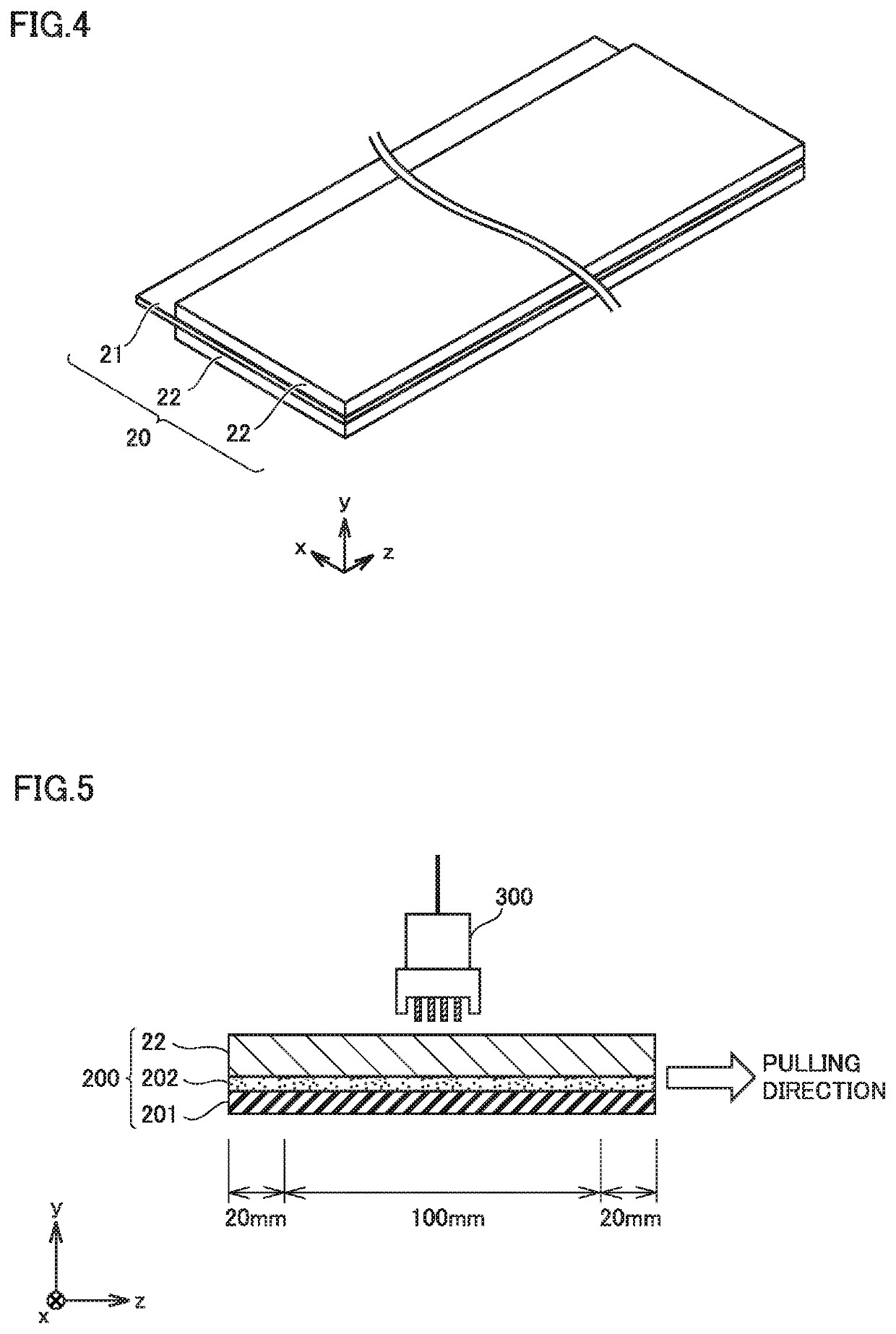Non-aqueous electrolyte secondary battery, method of evaluating negative electrode composite material layer, and method of producing non-aqueous electrolyte secondary battery
a secondary battery and composite material technology, applied in the field of non-aqueous electrolyte secondary batteries, can solve the problems of reducing the capacity of the battery, affecting the charge-discharge cycle, and affecting the performance of the charge-discharge cycle, so as to achieve the effect of increasing the specific capacity and increasing the battery capacity
- Summary
- Abstract
- Description
- Claims
- Application Information
AI Technical Summary
Benefits of technology
Problems solved by technology
Method used
Image
Examples
example 1
[0143]1. Producing Negative Electrode
[0144]The materials described below were prepared.
[0145]Negative electrode active material: SiO, graphite
[0146]Conductive material: CNT, graphene
[0147]Binder: CMC, SBR
[0148]Solvent: ion-exchanged water
[0149]Negative electrode current collector: Cu foil (thickness, 10 μm)
[0150]“SiO” refers to a compound represented by the above formula (I) where x=1. SiO, graphite, CNT, graphene, CMC, and ion-exchanged water were mixed, and thereby a dispersion was prepared. To the resulting dispersion, SBR was added. The SBR addition was followed by further mixing the dispersion, and thereby a coating material was prepared. The solid matter mixing ratio was as follows:
SiO:graphite:CNT:graphene:CMC:SBR=5:95:1:1:1.5:1.5 (mass ratio).
[0151]The coating material was applied to a surface of negative electrode current collector 21, followed by drying, and thereby negative electrode composite material layer 22 was formed. Negative electrode composite material layer 22 th...
examples 2 to 6
[0182]Battery 100 was produced in the same manner as in Example 1 except that the composition of the binder was changed as specified in Table 1 below.
examples 7 and 8
[0183]Battery 100 was produced in the same manner as in Example 1 except that the composition of the conductive material was changed as specified in Table 1 below.
PUM
| Property | Measurement | Unit |
|---|---|---|
| BET specific surface area | aaaaa | aaaaa |
| BET specific surface area | aaaaa | aaaaa |
| elongation | aaaaa | aaaaa |
Abstract
Description
Claims
Application Information
 Login to View More
Login to View More - R&D
- Intellectual Property
- Life Sciences
- Materials
- Tech Scout
- Unparalleled Data Quality
- Higher Quality Content
- 60% Fewer Hallucinations
Browse by: Latest US Patents, China's latest patents, Technical Efficacy Thesaurus, Application Domain, Technology Topic, Popular Technical Reports.
© 2025 PatSnap. All rights reserved.Legal|Privacy policy|Modern Slavery Act Transparency Statement|Sitemap|About US| Contact US: help@patsnap.com



